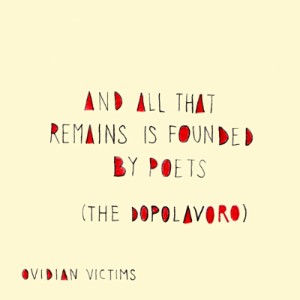Frank Moore
dal 11/9/2003 al 25/10/2003
Segnalato da
11/9/2003
Frank Moore
Sperone Westwater, New York
Moore's interest in the connection between ecology and illness spanned his entire career. In Farewell (1989), a work which elucidates the importance of autobiographical allusion in the artist's work, two entwined flowers with three-dimensional eyeballs at their centers huddle before the open blades of a secateur (...)

Sperone Westwater is pleased to announce a Frank Moore (1953-2002) exhibition, featuring his last works, along with selected earlier paintings and works on paper from the artist’s estate. An artist for whom the evolving relationship between nature and technology was both awe-inspiring and deeply disturbing, Moore intended his final paintings to focus primarily on “the garden, and its dark double, the anti-gardenâ€. In Study for Magic Carpet, he celebrates the emergent interest in organic farming by depicting a young farmer atop a floating and fecund “carpet†of grassy turf. In contrast is his timely interpretation of Harold Edgerton’s stroboscopic photography, Wild Blue Yonder, in which a silver bullet destroys genetically-altered corn. But while this allusion to such industries as bio-engineering implies a critical eye, it is significant that the bullet’s trail is a smoky strand of double helixes. Representative of the genetic treatments that have been so successful in the fight against AIDS, the piece suggests the complexities inherent in the technological debate. Always an intelligent painter, Moore’s social commentary is rarely simplistic or one-sided, and his struggle with paradox is consistently reflected in the works themselves.
In the Stromboli series, inspired by his visit to the active volcano, Moore takes “gardening on its grandest scale†as his subject. Unlike his earlier series on the Niagara Falls, in which he laments our newfound technological capacity to both govern and ruin that which once governed us, the slightly sinister beauty of Stromboli suggests that Moore has finally found an organic subject capable of retaining its sublimity. The dark vitality of these works, which chart the flow of molten lava from the chamber of the volcano to the explosion at the rim, is enhanced by a series of double helixes silk-screened onto the lava and surrounding water. Representative of a volcano’s capacity to generate amino acid – the antecedent to RNA and DNA – these genetic designs suggest the landform’s paradoxical role as both a creator and destroyer of life.
As evidenced by the show’s earlier works, Moore’s interest in the connection between ecology and illness spanned his entire career. In Farewell (1989), a work which elucidates the importance of autobiographical allusion in the artist’s work, two entwined flowers with three-dimensional eyeballs at their centers huddle before the open blades of a secateur; the piece was painted shortly after Moore and his partner were diagnosed with HIV. The fate of these flowers is reflected in the painting’s background, a vast and desolate landscape of severed tree stumps that simultaneously serves to universalize the artist’s individual affliction. But despite the gravity of many of Moore’s themes, the exhibition reveals above all his inimitable wit and acumen: he was a painter who never failed to find light in even the darkest of subjects, and perhaps it is the humor and vibrancy of his work that continues to distinguish him most.
Frank Moore, born in 1953 in New York City, died in April 2002. There was recently a museum exhibition entitled Frank Moore: Green Thumb in a Dark Eden organized by the Orlando Museum of Art; it subsequently traveled to the Albright-Knox Art Gallery in Buffalo, New York. A full-scale monograph, Between Life & Death, was published by Twin Palms Publishers in 2002.
Mario Dellavedova
"But all that remains is founded by poets. (The dopolavoro.) Ovidian victims."
Characterized by a heavily textured and freely sculpted surface that corresponds to the liquefied red letters of the title encircling it. The artist also takes the evocative power of language as the starting point for a bright orange rug with deep blue trim woven in Guadalajara, Mexico. The rug is a solid block of color, except for one white spot featuring the words of writer E.M. Cioran: "Je vadrouille a travers les jours comme une putaine dans une monde sans trottoirs" / "I wander through the days like a whore in a world with no sidewalks". By disturbing the uniformity of the piece, this absence of color imbues the viewer - or in this case, the "wanderer" - with the same sense of disorientation that Cioran describes.
Image: Mario Dellavedova, "But all that remains is founded by poets. (The dopolavoro.) Ovidian victims."
Sperone Westwater
415 West 13 Street
New York
tel. (212) 999-7337
fax. (212) 999-7338



